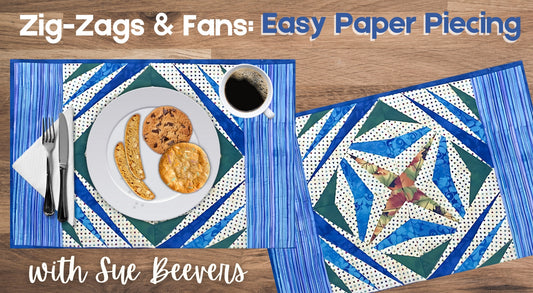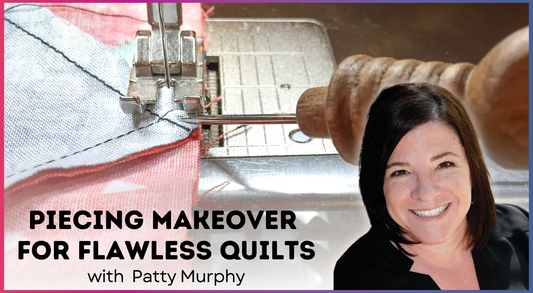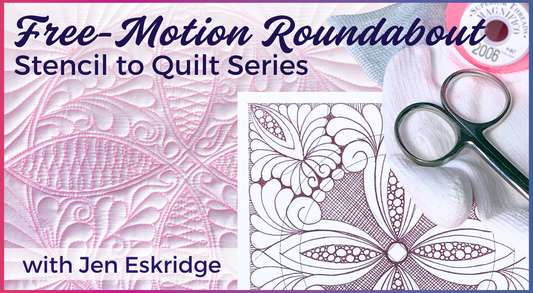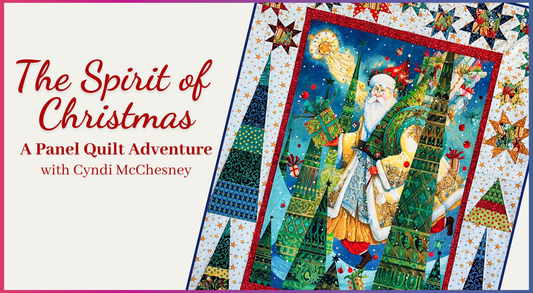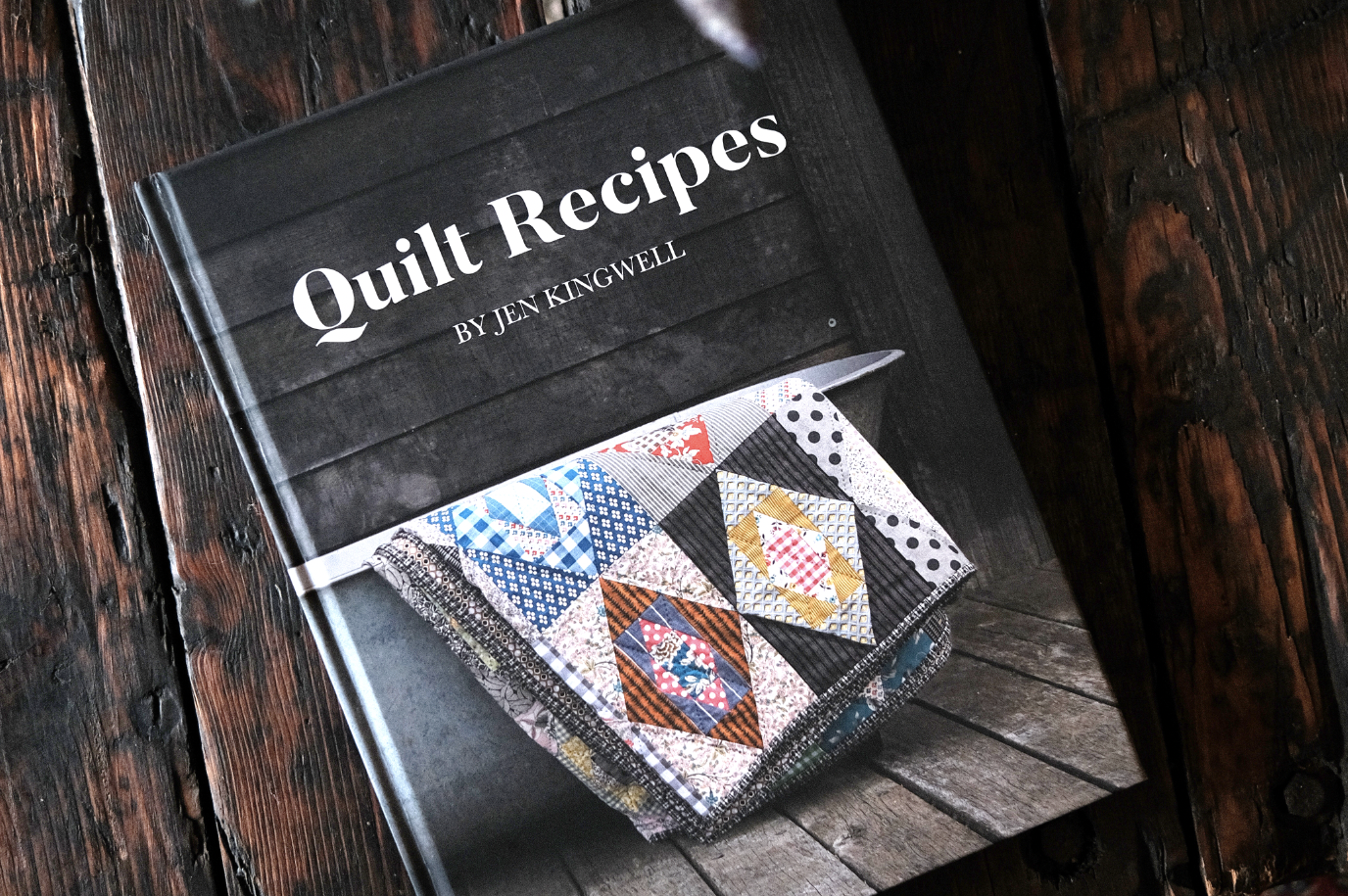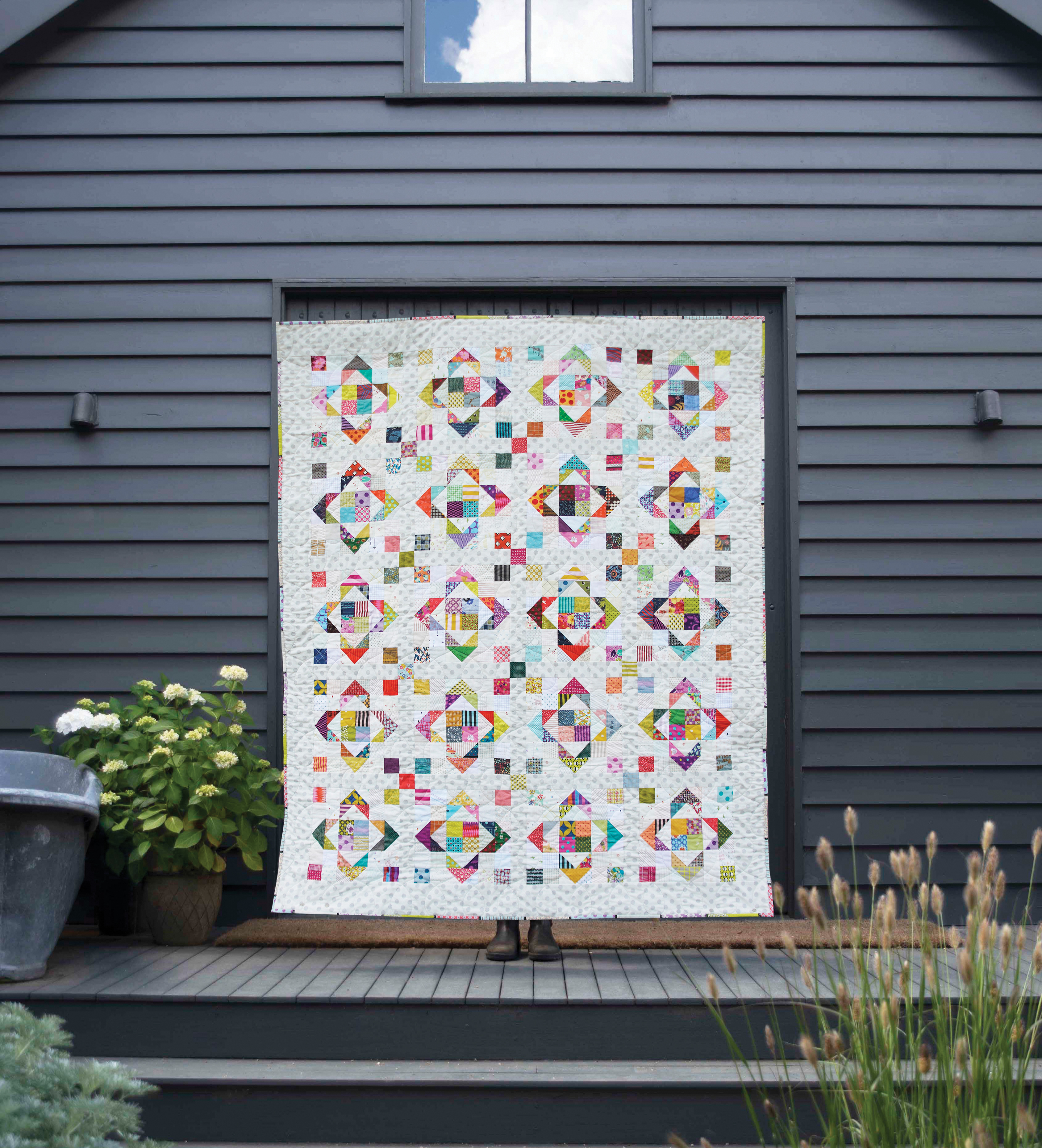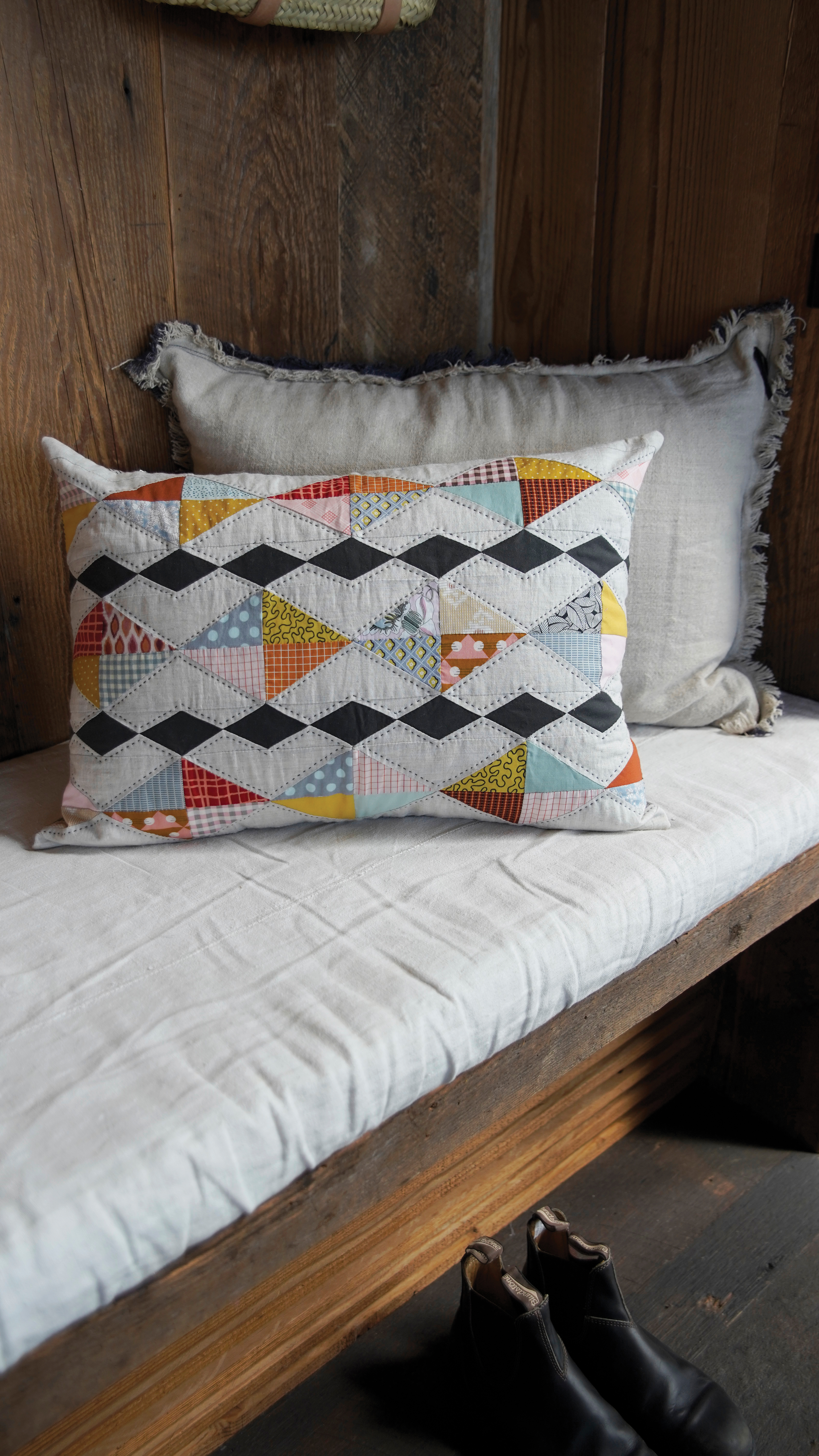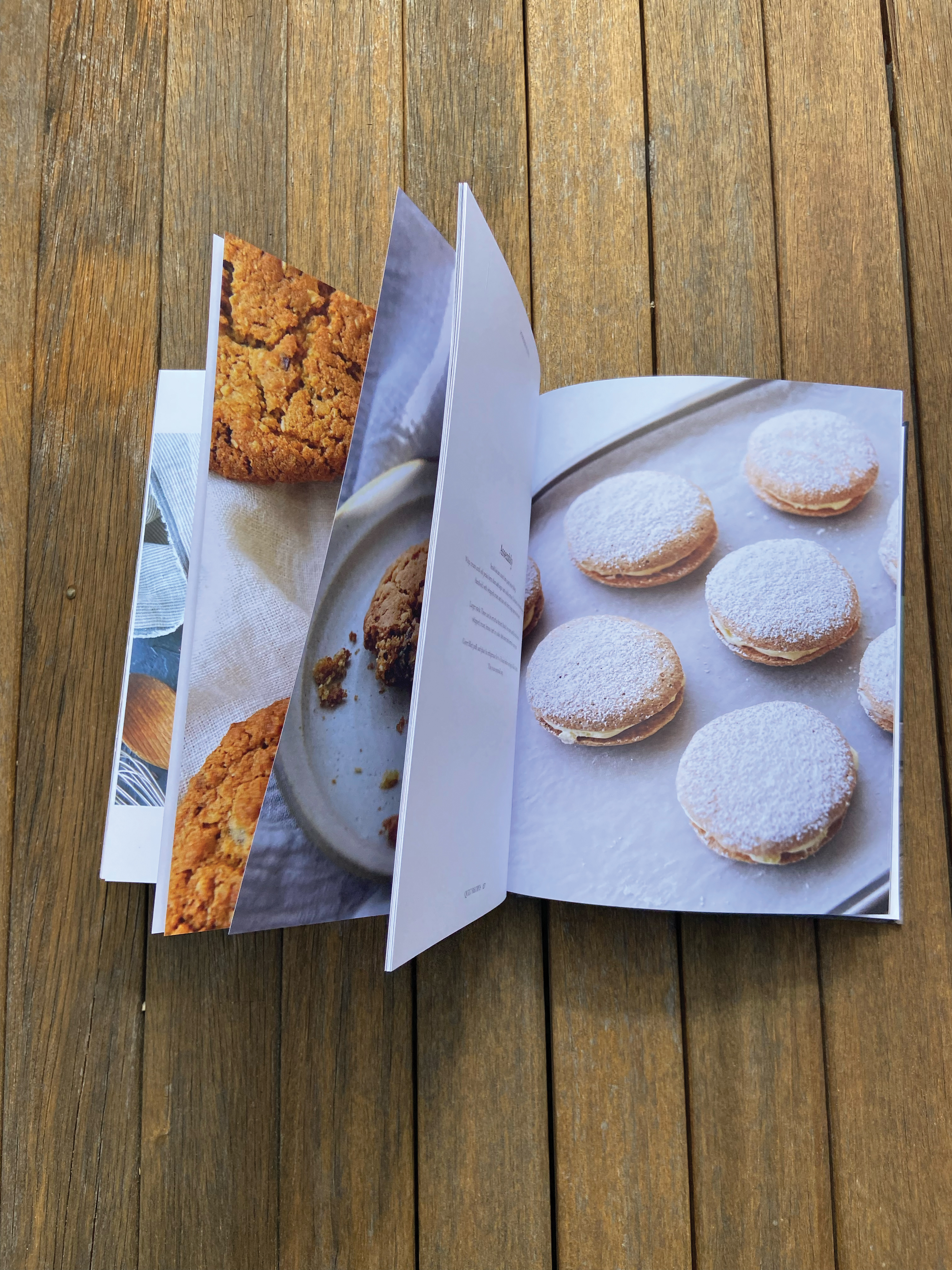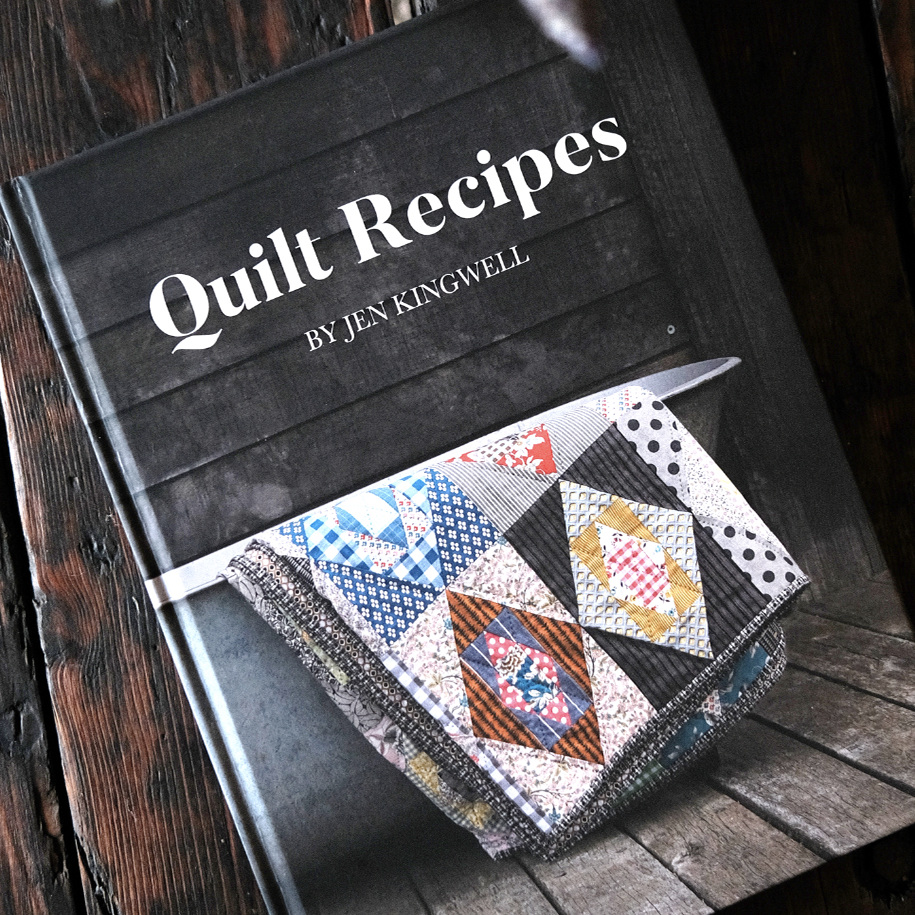
An Interview with Jen Kingwell
Share
Jen Kingwell, author of Quilt Recipes, is a visionary in the quilting world. In this delightful conversation, Jen shares the unique blend of flavors that fuels her creative journey. Just like a carefully crafted recipe, she intertwines the art of quilting with the precision of sewing, creating a delightful tapestry of textures and colors that captivates the senses.
1. What was it about hand-sewing/quilting that stole your heart as opposed to other portable crafts like embroidery, knitting, or crochet?
Throughout my life, I have tried my hand at so many different crafts - I still love to dabble, but it’s the fabric prints and color that always bring me back to quilting.
2. Quilt Recipes does a great job of pointing out whether or not the pattern was written for the purpose of machine piecing. What kinds of things do you consider when designing a quilt for machine piecing vs hand piecing?
While I love to hand piece (and have a tense relationship with my sewing machine) I understand that not everyone feels the same. So, when working on Quilt Recipes I wanted to make sure there was something in there for everyone. I’m so proud of it - The concept was to create a beautiful coffee table book full of treats for everyone. Even in the baking recipes, I wanted to make sure everyone could find a little something to tempt them.
3. Within machine and hand stitching, you offer a variety of options for your Quilt Recipe patterns, from machine-stitch foundation paper piecing to hand-stitched English-paper piecing and more. Are there designs that lean more toward EPP vs traditional hand-piecing? Why or why not? What do you consider when choosing to offer machine-stitched foundation papers?
I personally hand stitch almost every quilt I make because I love the process. However, if I am recommending that quilts are suitable for machining I will machine stitch the sample so I can write the pattern for that method. I rarely (never) EPP or Foundation myself - While I know how to use these techniques they are just not my preferred method. I design the quilt first, then if it’s suitable for EPP or Foundation Papers we will develop those products based on that.
4. In the introduction of Quilt Recipes, Sue Spargo says, “even if the world sang that word [designer] in unison,” you were far from believing it yourself. When did you begin to think of yourself as a designer?
Isn’t Sue a masterful writer? I love and respect her so much & for her to write such lovely things about me touched me deeply. That is such a good question and one I’ve never really thought about.
I think it just slowly crept up on me - Sometimes, I still doubt myself however I think any creative who’s turned their passion into their career (and livelihood) has those feelings.
I would say a huge turning point for me was when Moda approached me to design fabric for them - I was honored, and it really gave me confidence that people liked what I was contributing to the industry.
5. You’re known for combining a variety of fabric prints and patterns in your quilts. I can imagine that some of that comes from stash building. With Amité Textiles, you can access almost everything you want to order. When traveling around the world to different quilt shows and shops, what’s the magic formula for making the cut into Jen’s suitcase? Do you look for specific colors or patterns? Does it have to have a purpose in mind for you to buy it?
It doesn’t take much to get me to fall in love with fabric, and I have no hard and fast rules about what I like. I am probably more drawn by color than I am by print - The way the slightest change of tone can completely transform your palette makes me feel like I need to have access to every shade of every color under the sun!
You should see the size of my shop. I think we have well over 3,000 bolts of fabric with more arriving almost every day! My team often tries to limit my fabric buying, but it’s good to be the boss sometimes!!
6. You’ve worked with Moda to create several “lollies” as an easy option for people wanting to emulate your scrappy style (5” x WOF prints). When curating your own scrap stash, what is the smallest piece you’re willing to keep? Did that influence your decision to keep your lollies to 5-inch strips?
Oh goodness, if I love it I’ll keep it and use every last skerrick (do you guys use that word?). But that didn’t influence my decision to make the lollies 5” panels - This was simply to get 8 different prints across the width to achieve a more scrappy-looking fabric range.
7. Do you have a scrap-storing method that helps you make good use of your scraps in your quilts?
Yes! While I do have multiple containers for my scraps, I also store them on any available horizontal surface in my house and studio.
8. Is there a specific pattern from Quilt Recipes you recommend for someone just starting to hand-piece?
Wensleydale is a great one (the quilt featured on the cover of the book) as it’s all straight lines. Or, for beginners, I would also like to recommend smaller projects such as Clopin or Tomar, which are pillow projects in the book.
9. I imagine choosing a favorite recipe from the book would be a bit like choosing a favorite child, so let’s take a different angle. Say your children were to pick their favorite Mama Jen baked good from Quilt Recipes. What do you think they would choose and why?
The answer would be the Powder Puffs every time. They evoke the fondest family memories as my mum made a batch for every special occasion. I carried on this legacy… Until I and a number of members of my family were diagnosed with coeliac disease. So now, it would have to be the Orange Cake.
10. You’ve always been aware that hand-piecing is not everyone’s cup of tea. For those die-hard machine piecers, is there someone or something you recommend to people who really want to machine-piece your patterns?
While I can sew most things on my machine, I don’t enjoy the process, and as soon as something mechanically goes wrong, I’m done… So I would feel like I was leading you on a merry dance if I were to give you any advice on machine piecing!!
...
Shop Quilt Recipes at C&T Publishing.
Jen Kingwell started patchwork and quilting while at nursing school and was hooked immediately. She has taught patchwork and big-stitch quilting to hundreds of classes since entering the quilting industry. Jen currently lives in Melbourne, Australia. https://www.jenkingwelldesigns.com/

